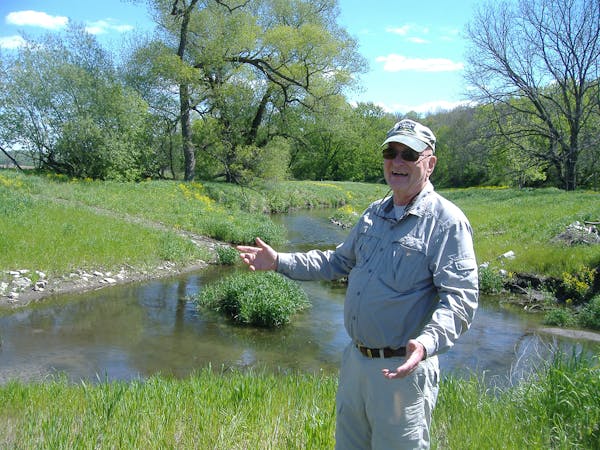It's the flip side of keeping invasive carp out of Minnesota waters, and it requires high-tech spying on 50-pound Flathead catfish, prized paddlefish, sturgeon, muskies, bigmouth buffalo and other native fish lurking in the Mississippi and St. Croix rivers.
Last week as a special DNR fishing crew continued to tag these critters with ultrasonic transmitters, agency officials were meeting over how to keep the research alive. Before this month ends, the DNR will formally lay out its request for $153,000 to extend its 3-year-old Native Fish Evaluation project.
"These fish can swim anywhere and we'll know where they go,'' said Joel Stiras, a DNR fisheries specialist in St. Paul.
In a collaboration with the U.S. Fish and Wildlife Service and other parties, Minnesota's natural resource managers are drilling down on the movements of native fish for an understanding of how to keep them from being harmed by any barriers that might be built to block the advance of bighead carp, silver carp and grass carp.
Among the concerns? Stiras said invasive carp barriers could cut off routes that native fish take to spawning grounds, feeding areas or wintering holes. The fish telemetry study already has documented that sturgeon in the St. Croix annually travel 30 to 40 miles upstream to Taylors Falls for an apparent spring spawning run that lasts two to three weeks.
"We don't want to cut off our nose to spite our face,'' Stiras said.
The ultimate protection strategy will be a balancing act because swarms of Asian carp have severely damaged ecosystems on stretches of the Mississippi River in Illinois and Missouri. Their feeding can dramatically reduce vegetation needed by native fish and they increase phosphorus levels in the water.
Fisheries experts are desperate to stop the invaders and the federal government has spent hundreds of millions of dollars on barriers and other work outside of Minnesota to keep invasive carp from reaching the Great Lakes.
The DNR emphasized urgency in its recent written request for funding to the Legislative-Citizen Commission on Natural Resources (LCCMR). The Native Fish Evaluation project is one of three invasive carp initiatives for which the DNR is seeking a total of $739,000.
"DNR has found an increase in numbers and distribution of invasive carp in Minnesota,'' the request said.
In 2014, three invasive carp were captured in the Mississippi between Hastings and St. Paul — the farthest upstream that invasive carp had been captured. Last year, six bighead carp were captured farther upstream in the St. Croix than ever recorded, and the first grass carp and bighead carp ever were captured last year and early this year in the Minnesota River.
"Many of these fish were mature females carrying large numbers of eggs,'' the DNR said in its request.
The agency's full presentation to LCCMR is scheduled for June 27.
Locks and dams
Stiras said the combination of placing ultrasonic transmitters in fish and disbursing a series of underwater receivers has provided data showing that fish swim upstream — past locks and dams — by entering lock chambers and "locking through'' along with boats. Previous research downplayed locks as a transportation mode for fish.
"Most of the fish we've seen look like they are locking through with boats,'' Stiras said.
Since the project began, the DNR's underwater receivers have been pinged 5 million times by fish implanted with transmitters. However, data can be sorted to follow a single fish. Researchers noticed a certain common carp passed the Ford Dam in St. Paul six times in about two hours, going back and forth between the lower pool and higher pool on July 17, 2014.
Researchers also have followed a catfish detected near St. Anthony Falls during summer. The fish traveled downstream past three locks to spend the winter of 2014-15 south of Red Wing. In May 2015 it returned to Minneapolis and stayed for the winter.
St. Mary's University assistant professor Joshua Lallaman said the research is bound to provide important new discoveries because it's the first time transmitters implanted in big fish are powered with batteries lasting 10 years.
Lallaman and his biology students at St. Mary's have contributed to the research by tagging five paddlefish, a threatened species in Minnesota. They follow the fish via pings sent to DNR receivers upstream of Winona and U.S. Fish and Wildlife receivers downstream.
"We'll see if our fish ever come back to Winona,'' Lallaman said. "This is the first time it's been possible to follow the fish for more than a couple of years.''
The DNR maintains a network of 70 acoustic receivers, tracking slightly more than 200 tagged fish across 11 species. Stiras said the plan is to keep adding fish and submerging more receivers in the rivers. With more receivers, computers should be able to provide a two-dimensional or three-dimensional snapshot of where the fish are locating in the rivers.
